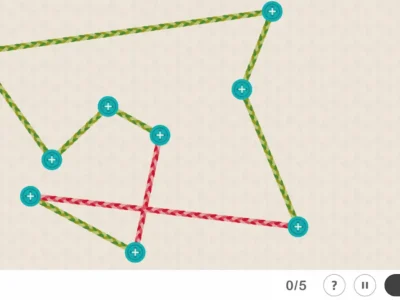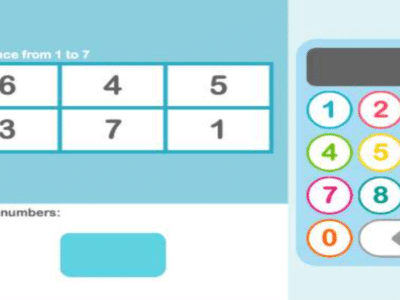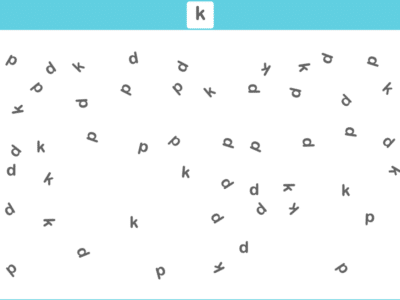Cognitive Functions
What are cognitive functions?
Cognitive functions are mental processes that allow us to carry out any task. They allow the subject to have an active role in the processes of receiving, choosing, transforming, storing, processing and retrieval of information, allowing the subject to navigate the world around him.
What are the most important cognitive functions?
The most important cognitive functions are attention, orientation, memory, gnosis, executive functions, praxis, language, social cognition and visuospatial skills.
Orientation
What is orientation?
Orientation is the ability that allows awareness of oneself and one’s surroundings at all times.
• Personal orientation: ability to integrate information regarding personal history and identity.
• Temporal orientation:ability to manage information regarding day, time, month, year, holidays, seasons, a time for a certain behavior, etc.
• Spatial orientation: ability to handle information related to where one came from, where one is at any specific moment, where one is going, etc.
Gnosis
What is gnosis?
Gnosis is the ability of the brain to recognize previously learned information such as objects, persons, or places collected from our senses. Thus, there are different types of gnosis, one for each sensory modality, and gnosis which combine different sensory modalities.
• Visual gnosis: ability to visually recognize various elements and attribute meaning to them (objects, faces, places, colors, etc.).
• Auditory gnosis: ability to recognize and differentiate between various sounds.
• Tactile gnosis: ability to recognize various objects by touch (textures, temperatures, etc.).
• Olfactory gnosis: ability to recognize, by smell, different odors.
• Gustatory gnosis: ability to recognize, through taste, different flavors.
• Body schema: ability to recognize and mentally perceive the body as a whole and its various parts, development of the movements that can be done with each, and orientation of the body in space.
Attention
What is attention?
Attention is the process of directing cognitive resources towards certain aspects of the environment, or towards the execution of certain actions that seem most appropriate. It refers to the state of observation and alertness that allows awareness of what is happening in the environment (Ballesteros, 2000).
In other words, attention is the ability to generate, direct, and maintain an appropriate state of alertness to correctly process information.
There are five different attention processes:
• Sustained attention: ability to fluidly maintain focus on a task or event for a prolonged period of time.
• Selective attention: ability to direct attention and focus on something without allowing other stimuli, either internal or external, to interrupt the task.
• Alternating attention: ability to shift our focus from one task or internal norm fluidly to another.
• Processing speed: rate at which the brain performs a task (it evidently will vary according to the task and depending on the other cognitive functions involved therein).
• Hemineglect: great difficulty or inability to direct attention towards either side (usually the left), in relation to the body as well as space.
Executive Functions
What are executive functions?
Executive functions are complex cognitive processes necessary for planning, organizing, guiding, revising, regulating, and evaluating behavior necessary to adapt effectively to the environment and to achieve goals (Bauermeister, 2008).
Executive functioning involves abilities and processes vital for daily life such as:
• Working memory: system that allows the maintenance, handling and processing of information in the mind.
• Planning: ability to generate goals, develop action plans to achieve them (sequence of steps), and to choose the appropriate one based on the anticipation of consequences.
• Reasoning: ability to compare results, draw inferences and establish abstract relationships.
• Flexibility: ability to generate new strategies in order to adapt behavior according to changing environmental demands.
• Inhibition: ability to ignore impulses or irrelevant information either internally or externally when performing a task.
• Decision making: ability to decide a course of action after weighing the various kinds of possible options as well as their possible outcomes and consequences.
• Time estimation: ability to roughly estimate the passage of time and the duration of an activity or event.
• Dual execution: ability to perform two tasks at the same time (they should be of two different types), paying attention to both simultaneously.
• Branching (multitasking):ability to organize and optimally perform tasks simultaneously, inter-mixing them yet at all times knowing the status of each.
Praxis
What is praxis?
Praxis refers to learned motor activity. In other words, praxis is the generation of volitional movement for the performance of a particular action or towards achieving a goal.
Different types of praxis include:
• Ideomotor praxis: ability to intentionally make a movement or a simple gesture.
• Ideational praxis:ability to manipulate objects through a sequence of actions, which implies the knowledge of the object’s function, knowledge of the action and knowledge of the serial order of the acts leading to that action.
• Facial praxis: ability to voluntarily make movements or gestures with different parts of the face (lips, tongue, eyes, eyebrows, cheeks, etc.).
• Visuoconstructive praxis: ability to plan and make the movements necessary in order to organize a series of elements in space to form a drawing or completed 3-D figures.
Memory
What is memory?
Memory is the ability to encode, store, and effectively retrieve previously learned information or past experiences. Memory is divided into two main types:
• Episodic memory: refers to information about events and experiences (where and when).
• Semantic memory: refers to general knowledge.
• Procedural memory: refers to particular actions or a sequence of learned actions, most of which are automatically retrieved without thinking about the action or movement (often difficult to verbalize).
Language
What is language?
Language is a high-level cognitive function that develops processes of symbolization related to encoding and decoding.
According to Lecours et al. (1979), language refers to the production of spoken or written signs that symbolize objects, ideas, etc. in accordance with a linguistic community’s own convention.
Within language there are various functions which can be disrupted:
• Expression: ability to formulate ideas in a meaningful and grammatically correct manner.
• Comprehension: ability to understand the meaning of words and ideas.
• Vocabulary: lexical knowledge.
• Naming: ability to name objects, people or events.
• Fluency: ability to produce fast and effective linguistic content.
• Discrimination: ability to recognize, distinguish and interpret language-related content.
• Repetition: ability to produce the same sounds one hears.
• Writing: ability to transform ideas into symbols, characters and images.
• Reading: ability to interpret symbols, characters and images and transform them into speech.
Social Cognition
What is social cognition?
Joint cognitive and emotional processes, by which we interpret, analyze, remember and use information about the social world. It refers to how we think about ourselves, others and their behavior, social relationships, and how we make sense of all that information and base our behavior accordingly.
Visuospatial Skills
What are visuospatial skills?
Visuospatial skill is the ability to represent, analyze, and mentally manipulate objects. There are two important concepts relating to visuospatial skills:
• Spatial relation: the ability to mentally perceive and manipulate objects in two dimensions.
• Spatial visualization: ability to mentally perceive and manipulate objects in three dimensions.
What do we use cognitive functions for?
Higher brain functions such as reasoning, memory and attention are essential for a full and independent life. Throughout the day we use the cognitive functions continuously. Our brain uses different cognitive abilities to prepare food, drive or hold meetings, activating different parts of our hemispheres to a greater or lesser extent.
Why are cognitive functions important?
All the activities that we perform require the use of our brain functions, which involves millions of neural connections distributed throughout our brain lobes and the activation of different areas of the brain to adequately deal with our environment and process the information that we obtain through various channels.
How do we use cognitive functions?
Information processing in the human mind is carried out through the cognitive system. The person has an active role in the processes of reception, selection, transformation, processing, recovery and transformation of the information that reaches the brain.
The processing of such information is composed of interrelated cognitive that act together to execute the most complex mental operations. In this way, a cognitive function can be joined or complemented with others to form a higher unit, a cognitive process, on which one can intervene by working on its most basic units (cognitive functions) or on its more elaborate processes (thinking skills).
When do cognitive functions start to deteriorate?
The loss of cognitive abilities is due to the normal process of aging. How we age and how we experience this process, as well as our health and functional capacity, depend on both the genetic structure and the environment that has surrounded us throughout our lives.
In addition, there are other factors that can alter cognitive abilities such as neurodegenerative diseases, neurodevelopmental disorders, intellectual disabilities or mental illness. Also, the consumption of narcotic substances, alcoholism, severe physical or mental trauma, can affect brain activity in an acute or chronic way.
How can we preserve cognitive functions?
It has been shown that deterioration slows down and deficits are milder if we maintain an active and healthy life in stimulating environments and if we continue to work on our abilities through cognitive stimulation practices and exercises.





